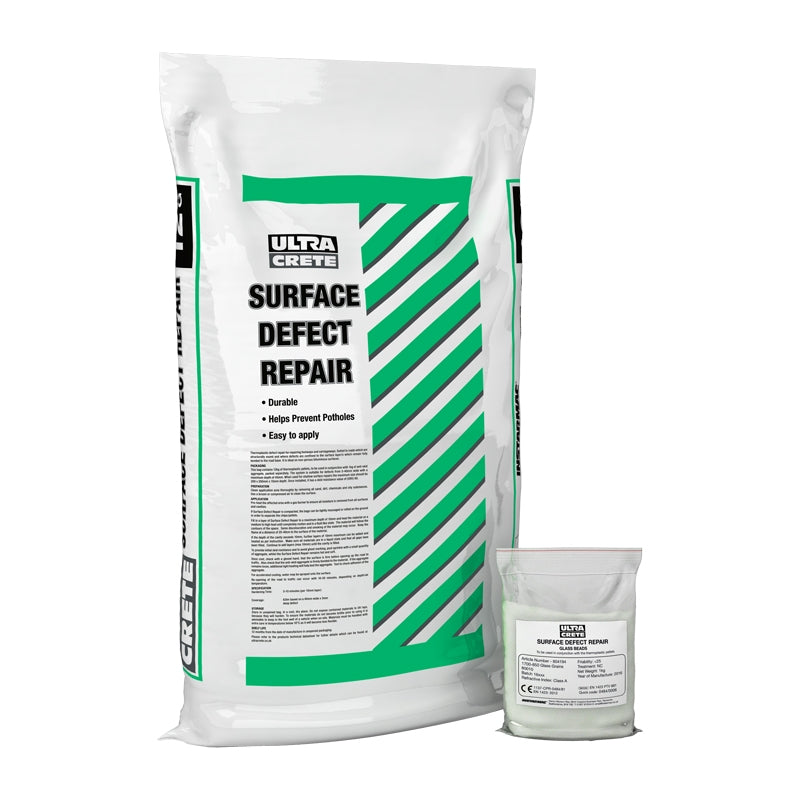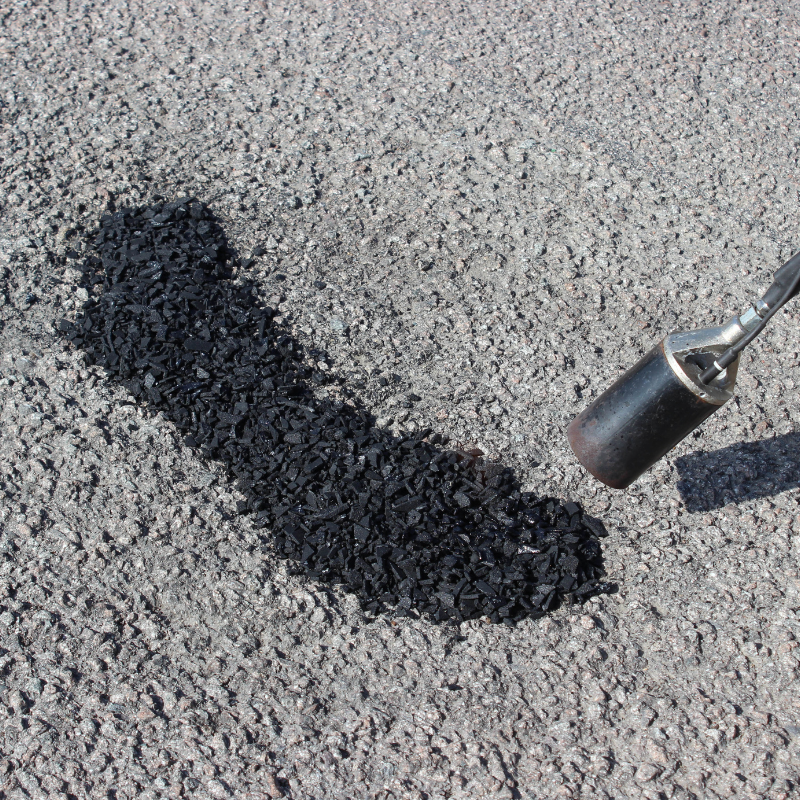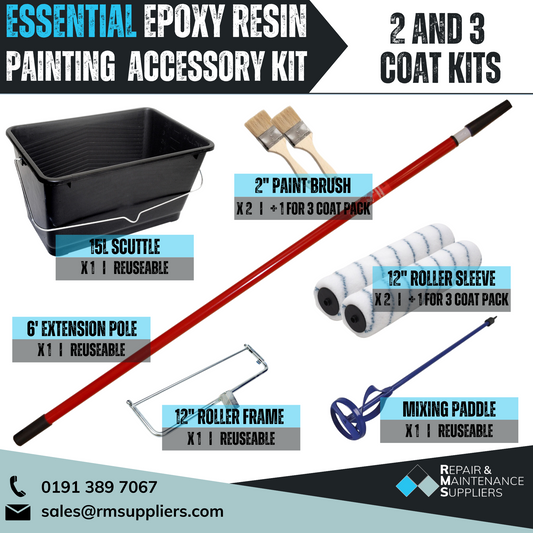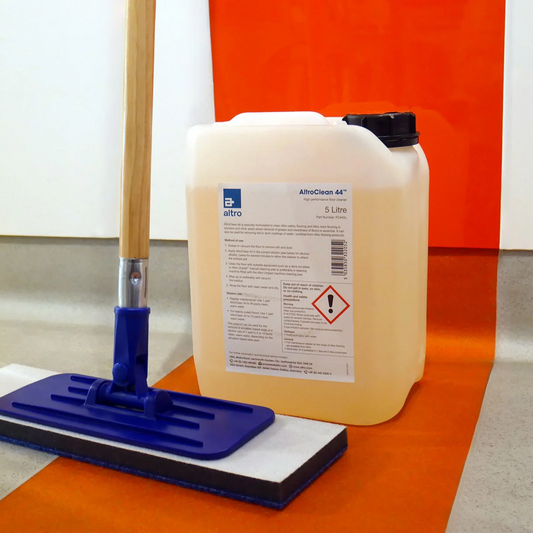Where to use
If SURFACE DEFECT REPAIR is compacted, the bags can be
lightly massaged or rolled on the ground in order to separate
the chips/pellets.
Fill in a layer of SURFACE DEFECT REPAIR to a maximum depth
of 10mm and heat the material on a medium to high heat
until completely molten and in a fluid like state. The material
will follow the contours of the space. Some discolouration
and smoking of the material may occur. Keep the flame at a
distance of 20-40cm to the surface of the material.
If the depth of the cavity exceeds 10mm, further layers of
10mm maximum can be added and heated as per instruction.
Make sure all materials are in a liquid state and that all gaps
have been filled.Continue to add layers (max 10mm) until the
cavity is filled.
To provide initial skid resistance and to avoid ghost marking,
post sprinkle with a small quantity of aggregate, whilst the
Surface Defect Repair remains hot and soft.
Once cool, check with a gloved hand, that the surface is firm
before opening up the road to the traffic. Also check that the
anti-skid aggregate is firmly bonded to the material. If the
aggregate remains loose, additional light heating will help
bed the aggregate. Test to check adhesion of the aggregate.
For accelerated cooling, water may be sprayed onto the
surface. Re-opening of the road traffic can occur within 10-20
mintues, depending on depth/air temperature.
Coverage
63lm per 13 kg unit, based on a 40mm wide x 3mm deep defect






